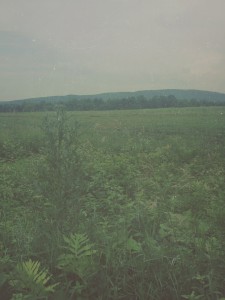Position, Measurement and Observation (Part 6)
By Asher Crispe: October 30, 2013: Category Inspirations, Quilt of Translations
Prologue to a Theory of Law
 The reorganization and redistribution of mountains amounts to a major disruption or remodeling of our survey of reality. However, while they (the mountains as old hierarchies) are dissembled or broken down, the corresponding hills (the more tempered modes of internal and external representation and expression) need only be muted.
The reorganization and redistribution of mountains amounts to a major disruption or remodeling of our survey of reality. However, while they (the mountains as old hierarchies) are dissembled or broken down, the corresponding hills (the more tempered modes of internal and external representation and expression) need only be muted.
One hint that may help us make sense of all this comes from the relating of the mountains and hills to masculine and feminine modes of being. The concentrated intensity of the mountains seeds the developmental process which expands upon them while bringing them down closer to the plains of everyday existence. Psychologically this would be homologous to peak experiences that erupt on the scene of a person’s inner world making a tremendous impression and standing out from the monotony of our average, everyday flow of thought on the floor of a ‘level’ mindset.
Consequently, the hill is the stepped-down reverberation in the mind that reflects upon the mountainous heights and enters them into an ongoing conversation with the preexisting assortment of ideas and concepts in the basin of the mind. It is me expressing something to myself. Just as companies have departments for internal communication which run parallel to, but are not identical with, their public relations, so too each of us ‘makes the case’ first and foremost in the privacy of our own mind. We literally ‘make up’ our minds.
Assuming that hills are feminine containers for mountains, these containers help to facilitate thought and intrapersonal expression and as such they have to communicate with a sensitivity to the mountains that they assimilate. Returning to our verse in Habakkuk 3:6 where “the eternal hills were humbled” once more, we can now contemplate the use of the word “shachu” (literally ‘bent down’ or ‘humbled’ from shachach) whose letters rearrange to spell “chush” meaning a “sense” or “type of intelligence.” Additionally, “shachu” can have its letters permutated to spell “chash” which denotes “silence.”
When combined, a “sense of silence” is in fact humbling to the swelling of ideas, to the conceit of concepts and to all of the noisemaking that I listen to in my mind when endeavoring to come to an understanding of something. These fixtures and furnishings of the cerebral landscape may clutter the horizons of experience. Subsequently, we may require periodic ‘mind-clearing.’ Hearing silence instigates a cognitive cleaning. It’s feminine in that the feminine begins with receptivity according to Kabbalah. I purify my mind and in doing so I clear the way for fresh, re-sensitized receptivity.
As far as the “eternal” part of the “hills” are concerned, the term employed is olam which etymologically begins as a time image (“eternity”) and evolves into a space image (the “world”). In the Chassidic meditations on this verse, both are inflected within the psyche which generates a perception of permanence of the larger mental structures or immense systems of thought whose contemplation necessitates tracing out a long arc or progression of ideas that rises from the ground to become a slightly elevated state of consciousness (hills).
Once again, all of this internal mapping get recapitulated in the relationship between my emotive self whose inner feelings quite literally get a ‘rise’ out of me and my modes of self-expression. When I open up and pour out these feelings to the other and to the world, I am in the mode of interpersonal transmission (as opposed to our prior example which was only intrapersonal). The words and gestures that I externalize take on a life of their own while also acting as the feminine containers and vehicles for communication. The ‘composure’ [read: compose+ure] attempts to maintain some kind of self-control, a self-limitation. Unless my inner mountains of emotion happen to be volcanic and on the verge of eruption/irruption, I tend to give myself over in a diminished sense. I never tell the whole story nor would you be able to reconstruct my life from the ‘interview’ exchange. My self-image counts as but a shadow of self.
When we hit upon one of those situations that could be compared to a blast of air knocking the file of documents we have on a person off the table–where the evidence (even ‘mountains of evidence’) assembled abruptly flies away–it is because of inadequate representation. Whereas before we were entertaining a state of affairs where something is revealed (as if from on High in the spirit of the Torah being given) that suddenly quiets the mind. Now our description finds us in the midst of conversation, only to break off unexpectedly, as if without warning the currency of self-expression became cheapened or even worthless. This silence creates a clearing in the conversation. My voice stops rising and trails off. Pause. Reset. Then play. Such interruptions force their way into our dialogues causing them to change course and head into unfamiliar territory.
Due to the ram-lamb as mountain-hill comparison from the previous article, we can therefore submit that we are dealing with the ‘silence of the lambs.’ A further prooftext for this association can be found in Yeshayahu (Isaiah) 53:7 “…as a lamb being led to the slaughter or a sheep that is silent before her shearers, so he did not open his mouth.” Thus, to be inwardly and outwardly dumbfounded temporarily is the gist of the leveling of the hills.
 In terms of the sequence of the verse, the positioning, measuring and observation are transforming (on a terraforming scale) of both my inner and outer world, the subjective and the objective. Everything is reevaluated. This would suggest that all epistemological considerations entail a participatory universe whereby we knowers are co-creators of the cases that we adjudicate. The preliminary ‘hearings’ are held in the ‘higher’ (in the sense of more abstract) court of the mind while the ‘opening’ statements and presentation of evidence are also made in the ‘lower’ (in the sense of being closer to the ‘concrete’ or ‘objective’ world) court. The trial can move from the higher court to the lower court and back again or it may even be conducted by both courts simultaneously. Moreover, both are courts of appeal.
In terms of the sequence of the verse, the positioning, measuring and observation are transforming (on a terraforming scale) of both my inner and outer world, the subjective and the objective. Everything is reevaluated. This would suggest that all epistemological considerations entail a participatory universe whereby we knowers are co-creators of the cases that we adjudicate. The preliminary ‘hearings’ are held in the ‘higher’ (in the sense of more abstract) court of the mind while the ‘opening’ statements and presentation of evidence are also made in the ‘lower’ (in the sense of being closer to the ‘concrete’ or ‘objective’ world) court. The trial can move from the higher court to the lower court and back again or it may even be conducted by both courts simultaneously. Moreover, both are courts of appeal.
From our reflections on the theoretical conditions of judgement, we are now ready to extract the textual source for the word for Jewish law (Halacha) in Part Seven.














;)
;)
;)
;)
;)
;)
;)
;)
;)
;)
